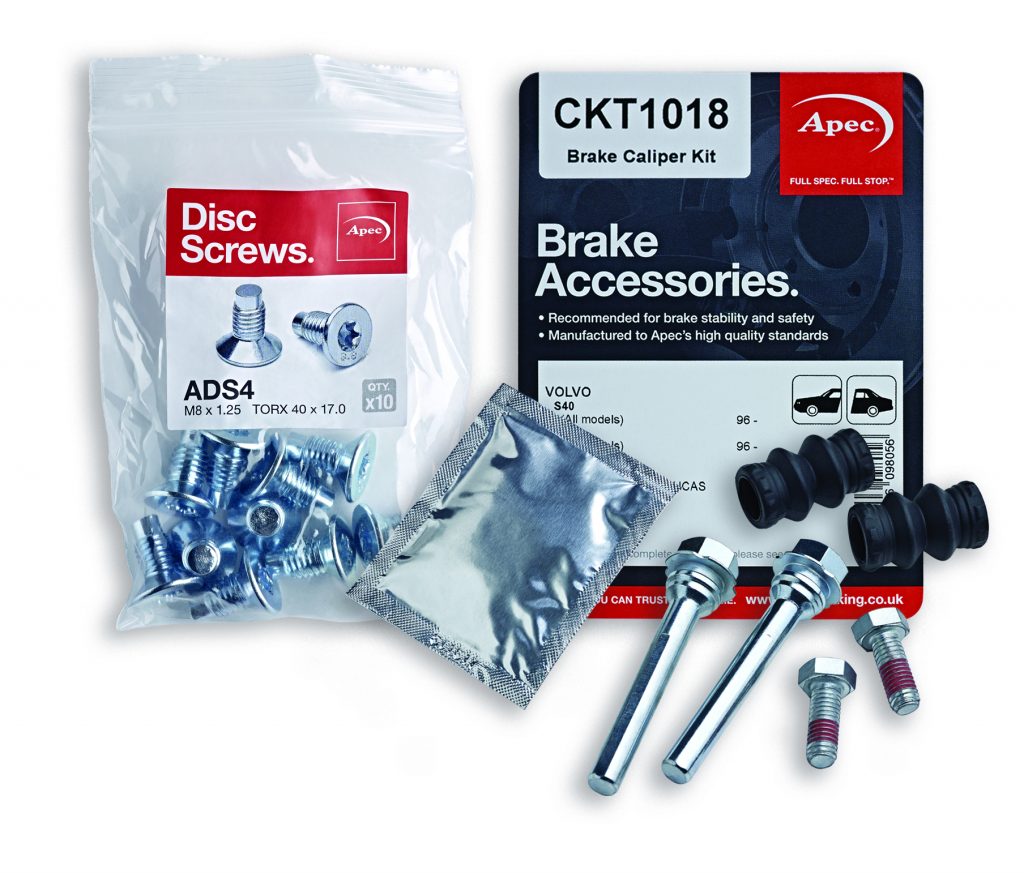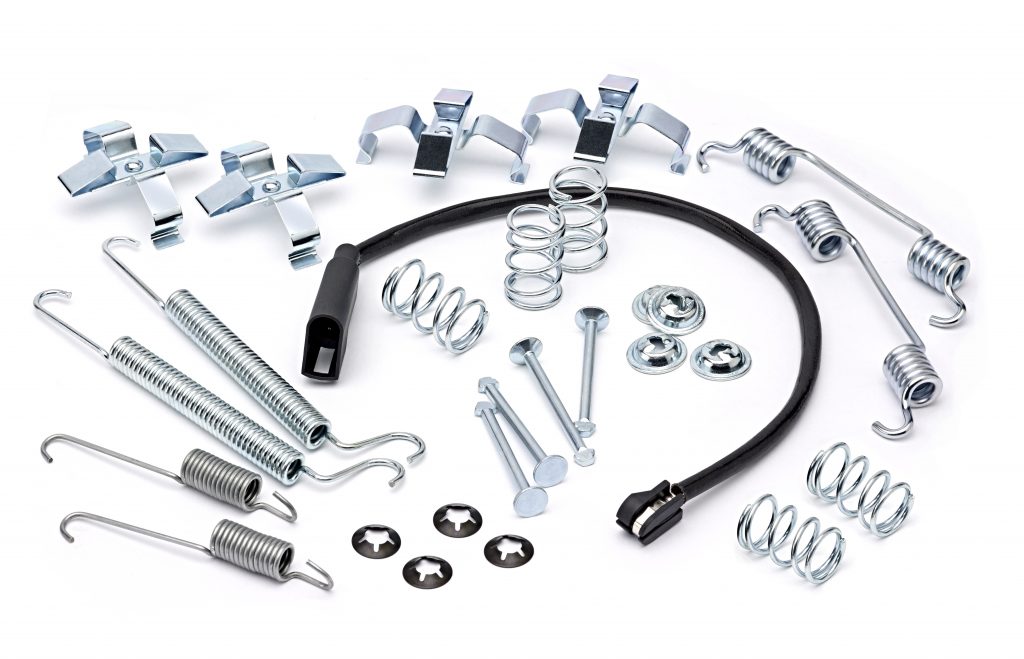
Apec tells PMM how replacing small braking accessories can benefit a garage business.
Replacing brake parts is one of your bread and butter jobs – no doubt new pads and discs are regular orders. But there are other brake servicing parts you can fit that make a big difference in reducing noise and vibration, can help enhance your reputation and give you that extra edge in your local market.
The quality of the pads, discs and shoes you fit obviously makes a considerable difference to the brake performance of your customers’ vehicles. Yet brake accessory parts have a crucial role to play too. Often overlooked, they also determine how well the vehicle stops, how quietly and reliably the brakes operate and how favourably your customers will think of your workmanship.
What do we mean by accessory brake parts?
Let’s take a look:
Pad and shoe fitting kits
Fitting new discs, pads and shoes but re-using the old springs or shims is a false economy that means you won’t get the best performance from the new parts.
After only one or two years of average motoring, the tensionon a brake pad caliper spring can reduce by up to 50%, causing increased noise, unequal wear and uneven braking. At best, this may merely be irritating for the customer. At worst, it can compromise stability and safety.
A rule to work by is if the springs or shims are weak, fit new replacements. Using fitting kits can save you time, and both you and your customers will know you’ve done the job properly.
Brake shoe adjuster bars
These are designed to compensate for brake lining wear, so as the shoes wear down, the handbrake will still hold the vehicle. However, the adjuster bars themselves will eventually wear to the point where they can’t be adjusted or may jam.
Unless you replace the adjuster bars, you could find even a new set of shoes won’t allow the handbrake to work. New brake shoe adjuster bars are an inexpensive way to maintain handbrake efficiency and keep the customer satisfied.
Caliper slider kits
If the caliper slide pins are worn, rusty, bent or seized in their bores, they won’t slide. The pads will be stuck against the disc, wearing out faster and causing uneven braking.
Sometimes a caliper slide pin kit is all that’s required to make disc brakes fully functional again. It’s a cost-effective repair that your customer will thank you for.
Wear leads
Brake pad wear leads are in a vulnerable location and easily damaged or detached. If they’re not present when the brake pad wears excessively, the warning light won’t illuminate, with the potential for ruined discs, poor braking and expensive consequences.That makes replacing a suspect or missing wear lead particularly crucial.
ABS sensors
ABS sensors also have a tough time, exposed to heat, dirt and moisture. The information they send is vital to several electronic driver aids, including ABS and ESP, so a nonfunctioning sensor is a real liability. It will also activate the ABS warning light, resulting in an MOT failure. Replacing a dud ABS sensor is relatively inexpensive, yet critical.
Disc screws
Disc screws have the job of securing the disc to the hub and preventing it from moving when you’re refitting the road wheel. They often seize in place and need drilling out. As the wheel bolts also hold the disc in place, some people think the screws are redundant and therefore don’t bother replacing them.
Yet, having no disc screws can have the same effect as fitting the disc to a dirty or corroded hub. The disc may not be accurately located, causing uneven pad wear and making the brakes snatch or grab. Disc screws are cheap but effective – replacing them makes the wheel, disc and hub easier to align and can help prevent unpredictable braking and an unpleasant driving experience.









